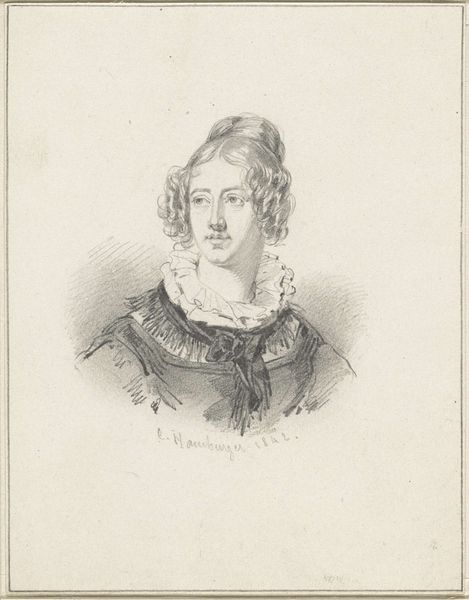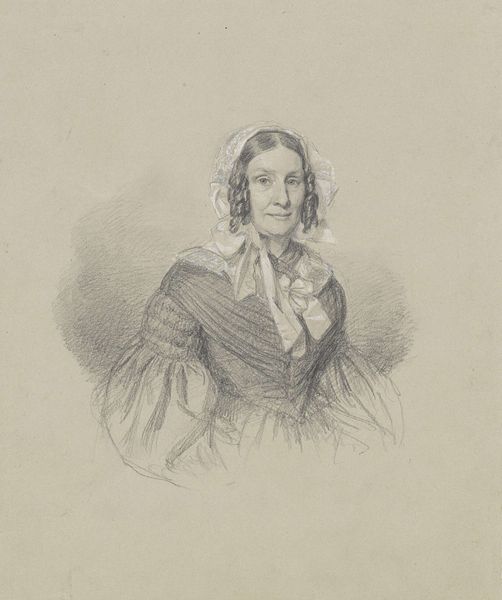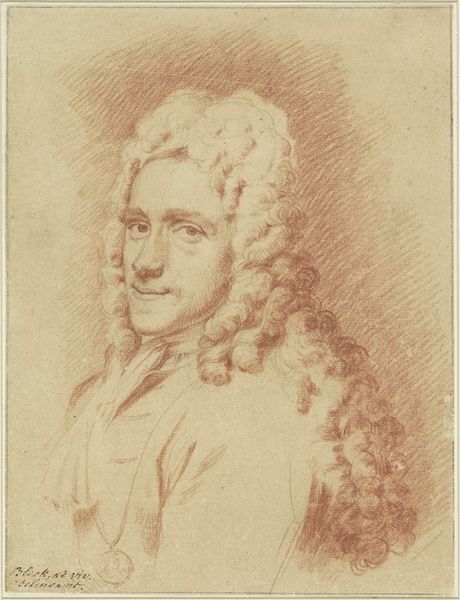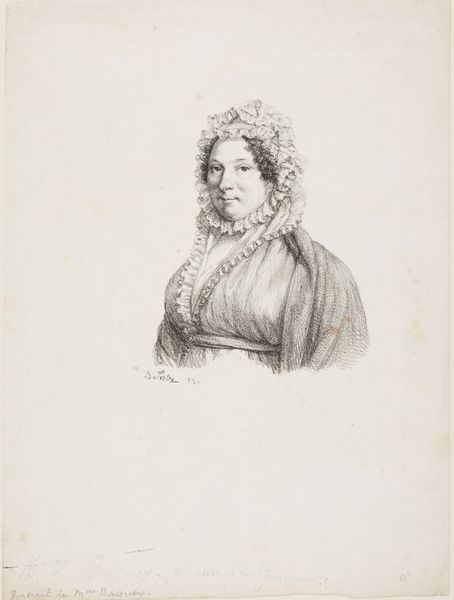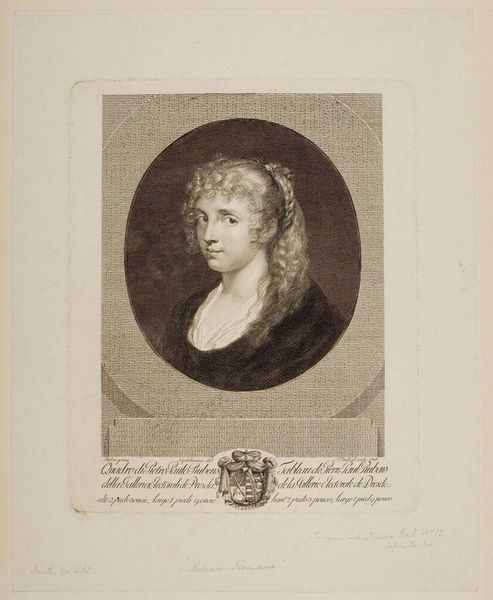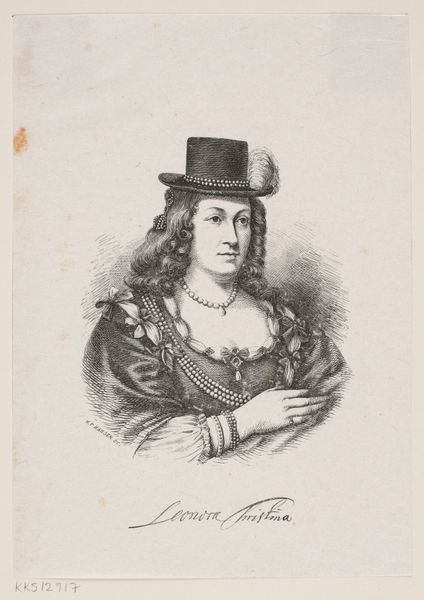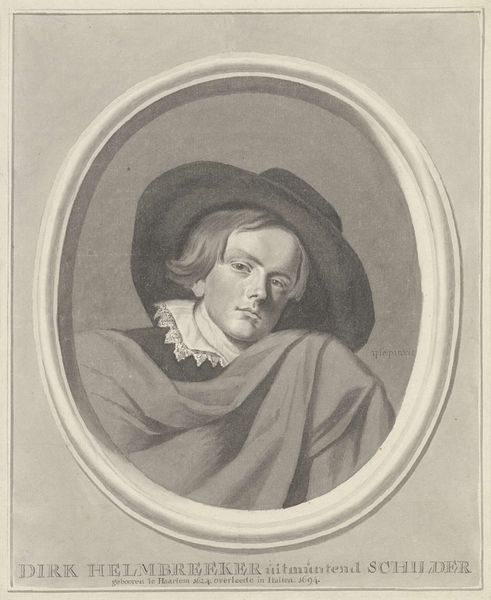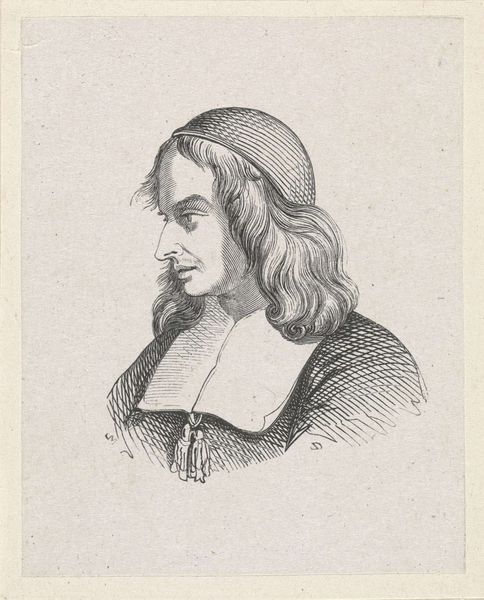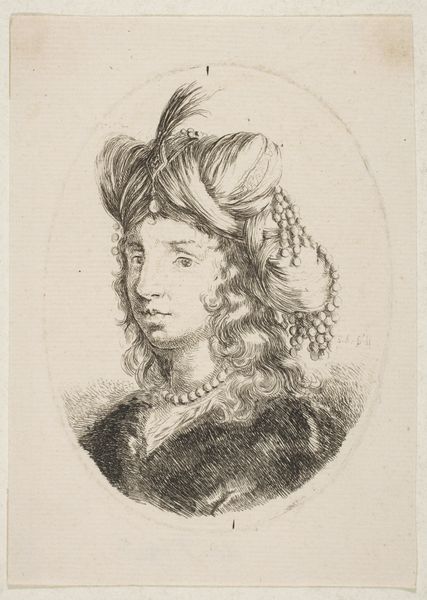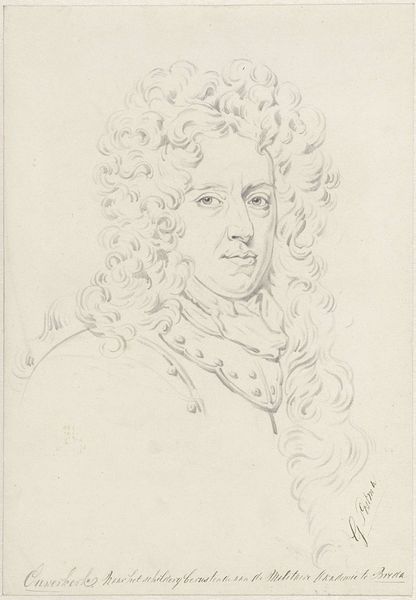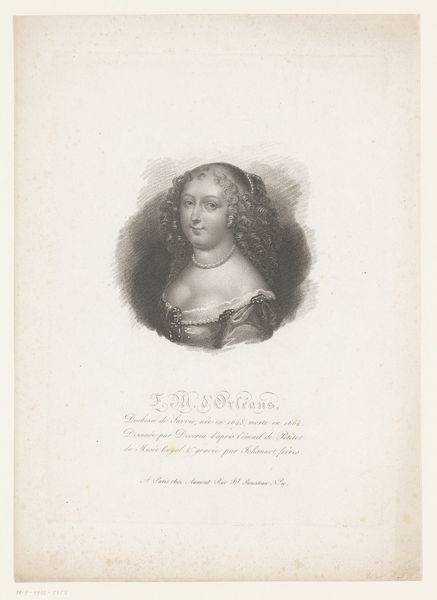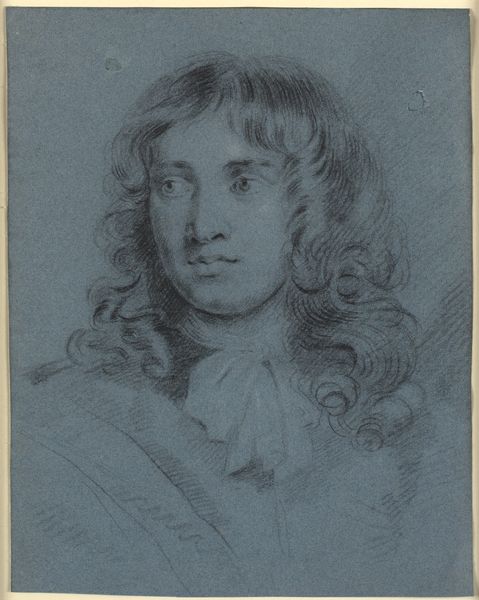
drawing, pencil
#
portrait
#
drawing
#
pencil drawing
#
romanticism
#
pencil
#
realism
Dimensions: height 122 mm, width 85 mm
Copyright: Rijks Museum: Open Domain
Coenraad Hamburger made this portrait of Charlotte Haij-Militz in 1842, using graphite on paper. It may seem simple, but the drawing embodies the convergence of artistic skill and emerging industrial processes. Graphite itself speaks to this intersection. While the act of drawing might seem straightforward, the production of graphite pencils was becoming increasingly sophisticated at this time. High-quality graphite had to be mined, processed, and carefully encased in wood – often cedar – using specialized tools and labor. Hamburger would have relied on these developments to achieve the nuances of tone and detail that define the sitter’s likeness. Consider also the paper: its smooth, uniform surface is itself a product of industrial manufacturing. The even texture allowed Hamburger to focus on the subtleties of light and shadow, capturing the delicate features and fashionable attire of Charlotte Haij-Militz. In essence, this drawing exemplifies the fusion of art, craft, and industry in the 19th century, reminding us that even the simplest of artworks are embedded in broader networks of labor, materials, and production.
Comments
No comments
Be the first to comment and join the conversation on the ultimate creative platform.
